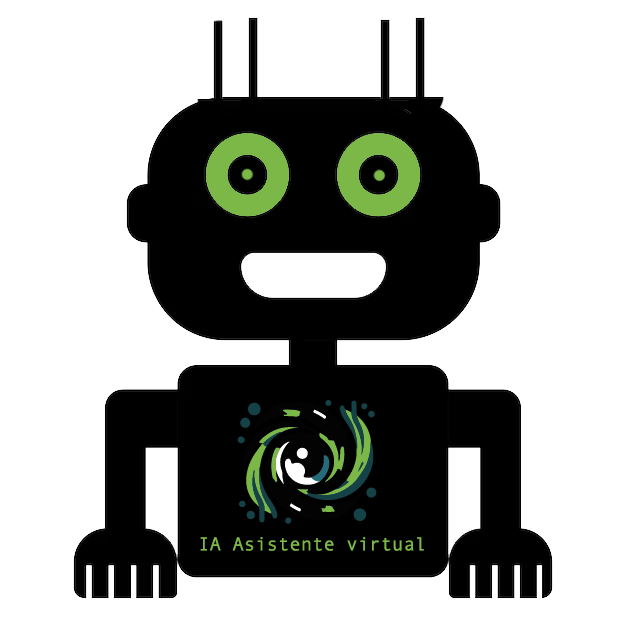From VR to ER in the Recovery of Artistic Heritage
DOI:
https://doi.org/10.62161/revvisual.v17.6056Keywords:
Virtual Reality, Heritage recovery, Extended Reality, Site-Specific Installations, Inmersive Experiences, Contemporary Art, Mixed RealityAbstract
The first contribution of the project is to evaluate the application of virtual reality (VR) in the recovery of artistic heritage. VR emerges as an innovative tool, transforming the interaction of viewers with artworks through computer-generated three-dimensional environments. This technology allows artists to develop interactive installations and immersive experiences, where users not only observe, but actively participate. The project has evolved towards the optimization of VR, extending its application from heritage recovery to the creation of new fully virtual works, with the potential to integrate artificial intelligence into future artistic experiences.
Downloads
Global Statistics ℹ️
|
76
Views
|
68
Downloads
|
|
144
Total
|
|
References
Adobe. (2021). Adobe Substance Painter 3D [Computer software]. Adobe Inc.
Annabestani, M., Sriram, S., Wong, S. C., Sigaras, A., & Mosadegh, B. (2024). Advanced XR-Based 6-DOF Catheter Tracking System for Immersive Cardiac Intervention Training (arXiv:2411.02611). arXiv. https://doi.org/10.48550/arXiv.2411.02611
Austin, J. H. (1978). Chase, chance and creativity. Columbia University Press.
Averbukh, N. (2014). Subjective-Situational Study of Presence. In R. Shumaker & S. Lackey (Eds.), Virtual, augmented and mixed reality: Designing and developing virtual and augmented environments (pp. 131–138). Springer International Publishing. https://doi.org/10.1007/978-3-319-07458-0_13
Burdea, G., & Coiffet, P. (2003). Virtual reality technology. Wiley Press.
Cabañas, P. (2020). Una mirada global al arte inmersivo de teamLab. Imafronte, 27, 1-27. https://doi.org/10.6018/imafronte.429171
Chen, M. Z. (2023). Relational experience design for immersive narratives (Tesis doctoral). University of California, Santa Barbara.
Clay, J. (1969). Cruz-Diez et les trois étapes de la couleur moderne. Galerie Denise René.
Cruz-Díez, C. (2009). Reflexión sobre el color. Fundación Juan March.
Csikszentmihalyi, M. (1996). Creatividad, el fluir y la psicología del descubrimiento y la invención. Paidós.
Csikszentmihalyi, M. (2007). Fuir (flow): Una psicología de la felicidad. Editorial Kairos.
Eliasson, O. (2012). Experience. Phaidon.
Epic Games. (2021). Unreal Engine [Computer software]. Epic Games.
Graham, D. (1978). Video-architecture-television. The Press of the Nova Scotia College of Art & Design / New York University Press.
Graham, D. (1992). Ma position-Écrits sur mes oeuvres. Les presses du réel.
Grau, O. (2002). Virtual arte: From illusion to immersion. The MIT Press.
Hsiang, E.-L., Yang, Z., Zhan, T., Zou, J., Akimoto, H., & Wu, S.-T. (2021). Optimizing the display performance for virtual reality systems. OSA Continuum, 4(12), 3052–3067. https://doi.org/10.1364/OSAC.441739
Innocente, C., Ulrich, L., Moos, S., & Vezzetti, E. (2023). A framework study on the use of immersive XR technologies in the cultural heritage domain. Journal of Cultural Heritage, 62, 268–283. https://doi.org/10.1016/j.culher.2023.06.001
Kadner, N. (2019). The virtual production field guide. Epic Games.
Komianos, V. (2022). Immersive applications in museums: An analysis of the use of XR technologies and the provided functionality based on systematic literature review. JOIV: International Journal on Informatics Visualization, 6(1), 60–73. https://doi.org/10.30630/joiv.6.1.708
Lee, K. M. (2004). Presence, explicated. Communication Theory, 14(1), 27-50.
Machon, J. (2013). Immersive theatres: Intimacy and immediacy in contemporary performance. Macmillan International Higher Education.
Maderuelo, J. (1990). El espacio raptado: Interferencias entre arquitectura y escultura. Mondadori España.
Mari-Altozano, M., & Sedeño-Valdelós, A. (2024). Arte audiovisual inmersivo: Antecedentes y líneas futuras. Fonseca, Journal of Communication, 28, 250-266. https://doi.org/10.48047/fjc.28.01.18
McDermott, W. (2018). The PBR guide. https://substance3d.adobe.com/tutorials/courses/the-pbr-guide-part-1
Milgram, P., & Kishino, F. (1994). A taxonomy of mixed reality visual displays. IEICE Transactions on Information Systems, E77-D(12), 1321–1329.
Milgram, P., Takemura, H., Utsumi, A., & Kishino, F. (1994). Augmented reality: A class of displays on the reality-virtuality continuum. Telemanipulator and Telepresence Technologies, 2351. https://doi.org/10.1117/12.197321
Mosadegh, B., Annabestani, M., Sri, S., Caprio, A., Janghorbani, S., Wong, S. C., & Sigaras, A. (2024). High-fidelity pose estimation for real-time extended reality (XR) visualization for cardiac catheterization. https://doi.org/10.21203/rs.3.rs-4645065/v1
Pesqueira Calvo, C., & Ramos Fabra, L. (2023). El espacio virtual del laberinto en las instalaciones artísticas. ESIC Editorial.
Pharr, M., Jakob, W., & Humphreys, G. (2016). Physically based rendering: From theory to implementation (3rd ed.). Morgan Kaufmann.
Ramos Fabra, L., & Pesqueira Calvo, C. (2021). Realidad extendida en las instalaciones artísticas. Revisión del mito de la caverna. In D. Caldevilla Domínguez, A. M. Botella Nicolás, & S. Martínez Martínez (Eds.), Nuevas tendencias en la comunicación digital (pp. 433-448). Editorial Fragua.
Ramos Fabra, L., & Pesqueira Calvo, C. (2023). Realidad virtual: La recuperación de instalaciones artísticas a través VR, ER y AR. Editorial Peter Lang.
Riera, J. (2012). Entrevista con Santiago Olmo. Javier Riera. Textos. http://javierriera.com/textos/entrevista-con-santiago-olmo/
Rolland, J., Baillot, Y., & Goon, A. (2001). A survey of tracking technology for virtual environments. In J. P. Rolland, L. D. Davis, & Y. Baillot (Eds.), Fundamentals of wearable computers and augmented reality (Cap. 4). CRC Press.
Romo, M. (1997). Psicología de la creatividad. Paidós.
Rost, R. J. (2004). OpenGL shading language. Addison-Wesley. http://archive.org/details/openglrshadingla00rand
Slater, M. (2007). The concept of presence and its measurement. Peach Summer School, Santorini.
Simó, A. (2019). La realidad virtual en la creación artística: Conceptos, tecnologías, trayectoria y actualidad. Arte y Políticas de Identidad, 20. https://doi.org/10.6018/reapi.389521
Turrell, J. (1993). Catálogo exposición. Fundación La Caixa.
Vallespín, A. (2003). El espacio arquitectónico aprehendido desde la obra de Mark Rothko (Tesis doctoral). Universidad Politécnica de Madrid. https://doi.org/10.20868/UPM.thesis.289
Villagómez-Oviedo, C. P. (2019). El proceso de creación del arte digital. ArDin, Arte, Diseño e Ingeniería, 8, 16-36. https://doi.org/10.20868/ardin.2019.8.3866
Downloads
Published
How to Cite
Issue
Section
License
Copyright (c) 2025 Authors retain copyright and transfer to the journal the right of first publication and publishing rights

This work is licensed under a Creative Commons Attribution-NoDerivatives 4.0 International License.
Those authors who publish in this journal accept the following terms:
-
Authors retain copyright.
-
Authors transfer to the journal the right of first publication. The journal also owns the publishing rights.
-
All published contents are governed by an Attribution-NoDerivatives 4.0 International License.
Access the informative version and legal text of the license. By virtue of this, third parties are allowed to use what is published as long as they mention the authorship of the work and the first publication in this journal. If you transform the material, you may not distribute the modified work. -
Authors may make other independent and additional contractual arrangements for non-exclusive distribution of the version of the article published in this journal (e.g., inclusion in an institutional repository or publication in a book) as long as they clearly indicate that the work was first published in this journal.
- Authors are allowed and recommended to publish their work on the Internet (for example on institutional and personal websites), following the publication of, and referencing the journal, as this could lead to constructive exchanges and a more extensive and quick circulation of published works (see The Effect of Open Access).













